In the 1972 round of the FIA manufacturer’s rally championship, every country had its hero. At that year’s Rallye Monte Carlo, Sandro Munari’s Lancia Fulvia 1.6 HF held off the Porsches and the Datsuns in a home victory for Italy. In Sweden, Stig Blomqvist notched up another win for Saab, burnishing a legend where decades later “Stig” would simply mean “racing driver.” Mk 1 Escorts took first and third in the East Africa Safari Rally, the former driven by a Flying Finn, the latter driver Kenyan-born. Quick-witted, compact drivers in little sports cars were everywhere, setting a blistering pace from Austria to the Acropolis.
But, in 1972, the FIA also came to America, and here, a Leviathan emerged.
Between the trees, a flash of white. Hear it before you see it, not a cammed-up Lancia with its odd V-4 rasp, but a bellowing 5.9-liter V-8, sucking down fuel through a Holley carb and belching thunder through dual exhausts. A huge great whale of a thing, flanks spattered with the winter mud of the Michigan peninsula. A stab of the brake and the driver throws the great beast sideways, all four wheels skittering in the gravel. The most unlikely of rally machines, a Jeep Wagoneer, its sides painted with the name “Moby Dick 1.”
Walter Röhrl, spare and lean, began as an alpine ski racer. Sébastien Loeb, short and muscular, got his start as a champion gymnast. Gene Henderson, driver of the Wagoneer, was a bear.
A former Navy signalman, he’d served in the Pacific in World War II, among the first on the beaches to direct artillery fire from Allied ships. Returning to Michigan, he went to work for the Dearborn police, and spend two decades on the job. At 6’2” and over 200 lbs, he was the sort of cop who could walk into a rowdy bar and defuse a brewing brawl just by his presence.
There were many hot-rodders on the force in those days, but Henderson was different. He’d spend his summer weekends racing a Volvo PV544, and in the winters would drift his cruiser around empty snow-covered parking lots. A hidden talent emerged. He was a sort of American version of Erik Carlsson, the Swedish rally champion who was husband to Pat Moss. Like Carlsson, Henderson was a big guy, but he could drive the wheels off anything.
Eight years before the FIA put its stamp on Michigan’s Press On Regardless Rally, Gene Henderson and co-driver Scott Harvey Jr. campaigned a V-8-powered Plymouth Valiant at the 1964 Monte Carlo rally. Famously, Paddy Hopkirk won that year in a Mini Cooper, cementing the Mini’s reputation as a scrappy underdog. Hamstrung by the French roadmaps—other teams had local translators to assist—Henderson and Harvey nonetheless managed a respectable fifth.
Back home in Michigan, Henderson made a name for himself in Time-Speed-Distance rallies, SCCA competition, and almost any other type of racing he could find time for. He founded his own performance parts company, Competition Ltd., in 1969, and business grew. By the early Seventies, Henderson had driven for everyone from Mercedes-Benz to Ford. John Buffum, the U.S. rally driver with the most national championship titles, once said, “Gene Henderson and Scott Harvey are the Lewis and Clark of ProRallying in the U.S.”
As November of 1972 approached, AMC was flying high. Race-prepped Javelins had notched up back to back championships in Trans-Am racing, and the gamble in purchasing the ailing Jeep brand was paying off. For the 1973 model year, the popular Wagoneer was getting a new full-time four-wheel-drive system marketed as Quadra-Trac. What better way to market it than with a win in America’s first FIA-approved rally?
Henderson believed he could pull off a victory despite the short development window. With Press On Regardless just two months away, two Wagoneers arrived at Competition for development work. Making power out of the big V-8 was pretty standard: aggressive timing, a hot cam, and more fuel got it to roughly 400 hp. Getting the Wagoneer’s near-5000-lb mass to sashay down the gravel was something else entirely. Working with Monroe, a multi-damper system was developed to allow the Wagoneer to hit bumps at speed without bouncing off the road.
The shakedown run was held at the local Moonlight Monte rally, where the two big Jeeps looked somewhat ridiculous in Parc Fermé. The rest of the field were sports cars, Datsun 510s and 240Zs, Volvos, Ford Escorts, and BMW 2002s. The elephantine white Wagoneers were the recipients of mockery, right until they placed fifth and sixth. People stopped laughing.
While far heavier than anything else in the running, the Wagoneer had an ace up its sleeve along with an ace at the wheel. Quadra-Trac was built by Borg-Warner and had a central differential lock, able to send partial power front or rear depending on slippage. Gene discovered that downshifting the three-speed automatic aggressively dragged all four-wheels and shed speed while remaining stable. Braking on the move pitched the nose-heavy Wagoneer into the corner and brought the back end around. It’s much the same technique you’d learn today on a modern rally-prepped Subaru: Brakes are for turning, throttle makes you go straight.
Still, the Wagoneers hadn’t won the Moonlit Monte outright, and the competition at Press On Regardless was world class. Buffum was there in his Ford Escort RS1600, as was European rally champion Harry Källström in a Lancia Fulvia HF. The rally was grueling, some 330 miles, mostly night stages, and there was plenty of experience in the eighty-plus cars fielded.
But this is where Gene Henderson comes in. Mike Van Loo, who later co-drove for Henderson in any number of rallies, describes how the big man would go silent behind the wheel before the car was released on the stage. It was absolute razor-focused concentration, like the flipping of a switch. In his final running of POR in 1984, Henderson would make zero mistakes over 270 miles. In 1972, he drove with the same near-perfection.
Buffum crashed out on the first night, but the Wagoneer couldn’t quite catch Källström’s Fulvia on most of the stages. The Swede was over eight minutes ahead, when Henderson pulled into a stage to see the Fulvia limping off. Källström was battling brake issues, and Henderson gave chase. With all four auxiliary lights blazing in his rearview, and that roaring V-8 beast close behind, Källström overcooked a corner and rolled the car.
Henderson and co-driver Ken Pogue stopped to check that everyone was okay, rivals or not, then dashed on to the next control point. Maintaining first place over the next night was more about preserving the Wagoneer and not making any blunders, but nevertheless Henderson extended his lead. He was so far ahead of the Datsuns that he actually stopped and hosed off the Wagoneer so that it would be clean when rolling across the finish line.
AMC, and the fans, loved the victory. Much of the rest of the local and international rally scene were outraged. The big Wagoneers seemed to fly in the face of the spirit of rally, their four-wheel-drive systems an unfair advantage. It was the first FIA rally win for an American driver in an American car, and the first for a team using all-wheel drive, But, by April of 1973, the FIA banned four-wheel drive from rallying entirely.
However, the European teams had been paying attention, and they watched as four-wheel-drive continued to be legal in SCCA ProRally. Henderson won the 1974 Pro Rally championship in a Jeep Cherokee, and would continue to campaign for AMC in an Eagle SX-4. Audi, and later Porsche, would bring AWD back to FIA rallying, but a Jeep had gotten there first.
Henderson continued rallying long past his professional driving career, in multiple Time-Speed-Distance rallies, including the long-distance Al-Can 5000. He was inducted into the Michigan Motorsports Hall of Fame in 1989. When he died in 2005, the stories flowed out from the rallying community. Many a now-gray-haired rally driver had once been a novice receiving counsel from Gene. Many remembered him as a man with a code, not to be crossed, but there with help even for his competition. A pillar of the community, his contribution even bigger than he was.
In 1972, every country had a rally hero. America’s was a big man in a big Jeep, setting the stage for what modern rallying would become decades later. A pioneer in a Wagoneer, just as it should be.

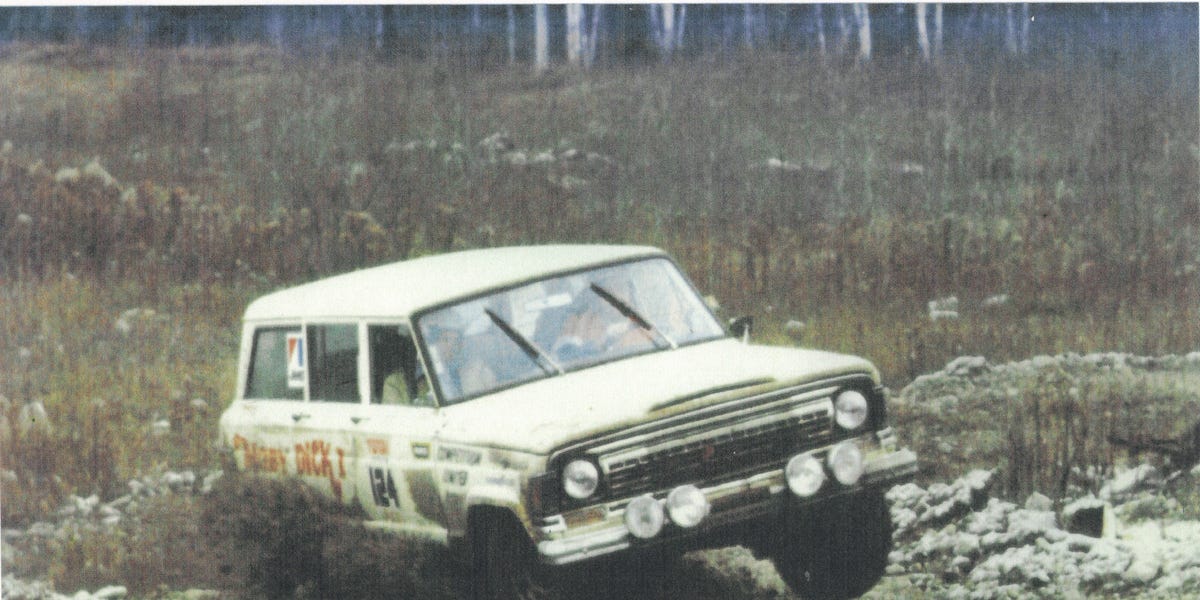

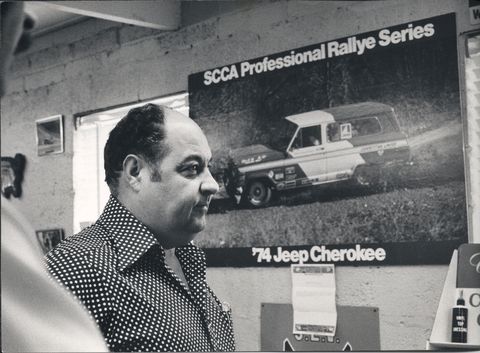

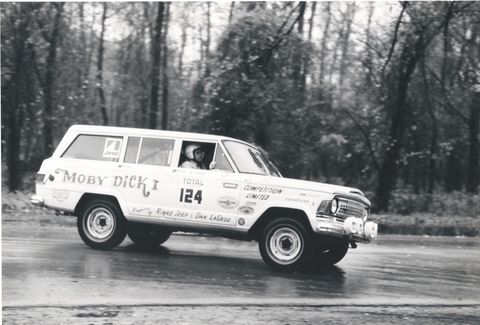
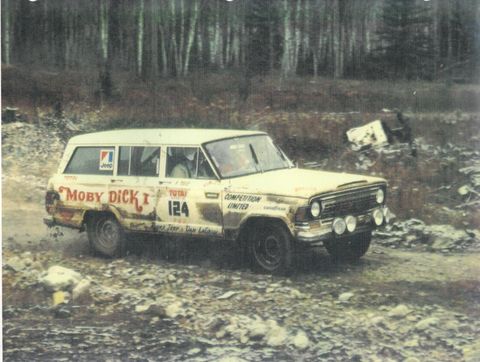

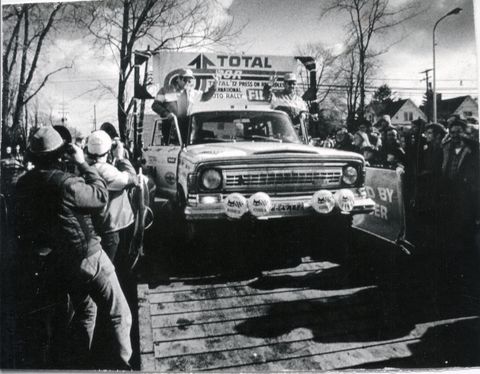
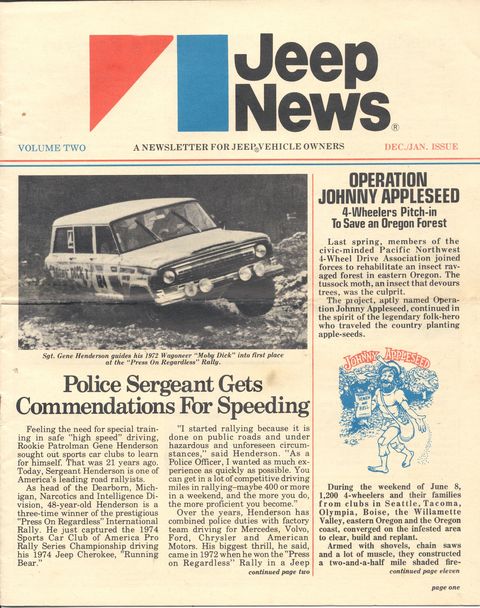
More Stories
Jeep | 2023 and 2024 Jeep Car Models and Prices | New Jeep Vehicles In The USA
Check Out This 1966 Jeep Gladiator Restomod That Packs A 700-HP Surprise
10 Reasons Why You Should Buy The 2024 Jeep Wrangler